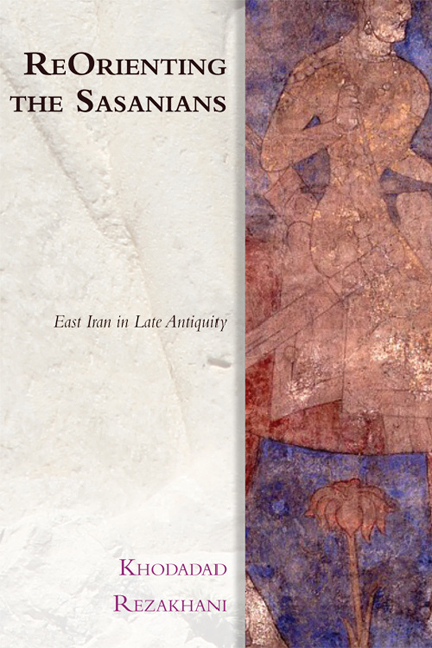Book contents
- Frontmatter
- Contents
- List of Illustrations
- Acknowledgements
- Series Editor's Preface
- Maps
- Preface
- Introduction
- 1 The Sasanians and the Sistanis
- 2 The Kushans and the Sasanians
- 3 The Kushano-Sasanians in East Iran
- 4 The Iranian Huns and the Kidarites
- 5 The Alkhans in the Southern Hindu Kush
- 6 The Hephthalite ‘Empire’ and its Successors
- 7 Sogdiana in the Kidarite and Hephthalite Periods
- 8 The Nēzak and Turk Periods
- 9 Tokharistan and Sogdiana in the Late Sasanian Period
- 10 General Conclusions and Postscript
- 11 Epilogue and Excursus on the Shahnameh
- Bibliography
- Index
11 - Epilogue and Excursus on the Shahnameh
Published online by Cambridge University Press: 07 December 2017
- Frontmatter
- Contents
- List of Illustrations
- Acknowledgements
- Series Editor's Preface
- Maps
- Preface
- Introduction
- 1 The Sasanians and the Sistanis
- 2 The Kushans and the Sasanians
- 3 The Kushano-Sasanians in East Iran
- 4 The Iranian Huns and the Kidarites
- 5 The Alkhans in the Southern Hindu Kush
- 6 The Hephthalite ‘Empire’ and its Successors
- 7 Sogdiana in the Kidarite and Hephthalite Periods
- 8 The Nēzak and Turk Periods
- 9 Tokharistan and Sogdiana in the Late Sasanian Period
- 10 General Conclusions and Postscript
- 11 Epilogue and Excursus on the Shahnameh
- Bibliography
- Index
Summary
The present volume leaves the scene of East Iran around the moment that Muhammad Abdulhayy Shaban's book on the Abbasid Revolution starts, sometime in the first half of the eighth century ad. In that sense, it also hopes to be a complement, and a tribute, to that great scholar and his work. The region in which the present book ends, and whence Shaban's Abbasid Revolutionaries emerge, is called Khurasan. It is a region that is developing a coherent identity out of the ancient regions of Bactria, Arachosia, Gandhara, and Parthia, and is slowly integrating Sogdiana, its most effective centre. Khurasan eventually rose as a centre in its own right, dominating the eastern regions of the Islamic world up to the rise of the Safavids in 1501. Even after the physical uprooting of the Timurid court from its Khurasani base in Herat, the influence of East Iran continues to shine through the culture of Mughal India, the political inheritor of Tamerlane and his empire.
During the 800, or perhaps even 1,000, years of East Iranian dominance, the region also emerged as a centre of culture for most of the Iranian world. Most of what is attributed to the ‘medieval’ culture of Iran, invariably considered the ‘Persianate world’ or something similar, is owed to Khurasan and the political powers that controlled it. Even the development of ‘Persian’ as the lingua franca of this Persianate world is due more to East Iranian/Khurasani efforts than those of its ‘homeland’ of Persis, or the Mesopotamia of the Middle-Persian-speaking Sasanians. The Samanids, emerging from Bactria and taking power in Sogdiana, chose Persian, the ‘Second Language of Islam’ and the administrative language of Bukhara, as their official language. It was under their rule that al-Tabari's great history and his Quranic Tafsīr were translated into Persian. It was under their patronage that Persian literature was also allowed to develop. The legacy of Samanid patronage of Persian art and letters, in a distinctily East Iranian garb named Khurasani, was continued by all their successors, including the Turkic Ghaznavids and the Seljuks.
- Type
- Chapter
- Information
- ReOrienting the SasaniansEast Iran in Late Antiquity, pp. 194 - 198Publisher: Edinburgh University PressPrint publication year: 2017



